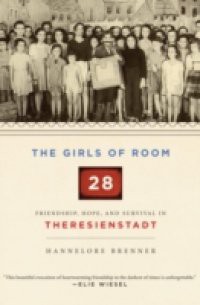From 1942 to 1944, twelve thousand children passed through the Theresienstadt internment camp, near Prague, on their way to Auschwitz. Only a few hundred of them survived the war. In The Girls of Room 28, ten of these childrenmothers and grandmothers today in their seventiestell us how they did it. The Jews deported to Theresienstadt from countries all over Europe were aware of the fate that awaited them, and they decided that it was the young people who had the best chance to survive. Keeping these adolescents alive, keeping them whole in body, mind, and spirit, became the priority. They were housed separately, in dormitory-like barracks, where they had a greater chance of staying healthy and better access to food, and where counselors (young men and women who had been teachers and youth workers) created a disciplined environment despite the surrounding horrors. The counselors also made available to the young people the talents of an amazing array of world-class artists, musicians, and playwrightsEuropean Jews who were also on their way to Auschwitz. Under their instruction, the children produced art, poetry, and music, and they performed in theatrical productions, most notably Brundibar, the legendary childrens opera that celebrates the triumph of good over evil. In the mid-1990s, German journalist Hannelore Brenner met ten of these child survivorswomen in their late-seventies today, who reunite every year at a resort in the Czech Republic. Weaving her interviews with the women together with excerpts from diaries that were kept secretly during the war and samples of the art, music, and poetry created at Theresienstadt, Brenner gives us an unprecedented picture of daily life there, and of the extraordinary strength, sacrifice, and indomitable will that combinedin the girls and in their caretakersto make survival possible.From the Hardcover edition.

